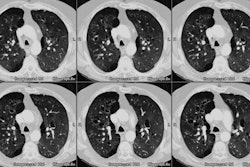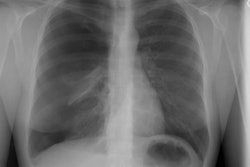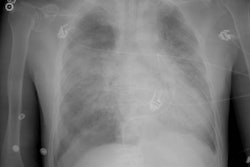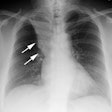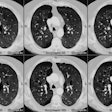Adult respiratory distress syndrome due to pulmonary and extrapulmonary causes: CT, clinical, and functional correlations.
Goodman LR, Fumagalli R, Tagliabue P, Tagliabue M, Ferrario M, Gattinoni L, Pesenti A
PURPOSE: To assess the differences in CT appearance between adult respiratory distress syndrome due to pulmonary disease (ARDSP) and that due to extrapulmonary disease (ARDSEXP) and determine whether the variable appearances of ARDS are due, in part, to the initial pulmonary and systemic causes. MATERIALS AND METHODS: Thirty-three patients, 22 with ARDSP and 11 with ARDSEXP, underwent helical CT shortly after intubation. Two readers evaluated images for the type, extent, and distribution of pulmonary opacities; secondary findings; and correlation with survival and physiologic parameters. RESULTS: In both ARDSP and ARDSEXP, approximately 80% of the lung was abnormal. In ARDSP, ground-glass opacification and consolidation were equally prevalent, whereas in ARDSEXP ground-glass opacification was dominant. Ground-glass opacification was evenly distributed, whereas consolidation tended to be dorsal and caudal. ARDSP often caused asymmetric consolidation, whereas ARDSEXP caused symmetric ground-glass opacification. Air bronchograms were almost universal. Pleural effusions were present in one-half of the patients, and Kerley B lines and pneumatoceles were uncommon. Lung consolidation correlated with the ratio of mean partial pressure of arterial oxygen to fraction of inspired oxygen, shunt fraction, and pulmonary arterial pressure. The patients who died tended to have more consolidation and asymmetric disease. CONCLUSION: ARDSP tends to be asymmetric, with a mix of consolidation and ground-glass opacification, whereas ARDSEXP has predominantly symmetric ground-glass opacification. In both groups, pleural effusions and air bronchograms are common, and Kerley B lines and pneumatoceles are uncommon.
